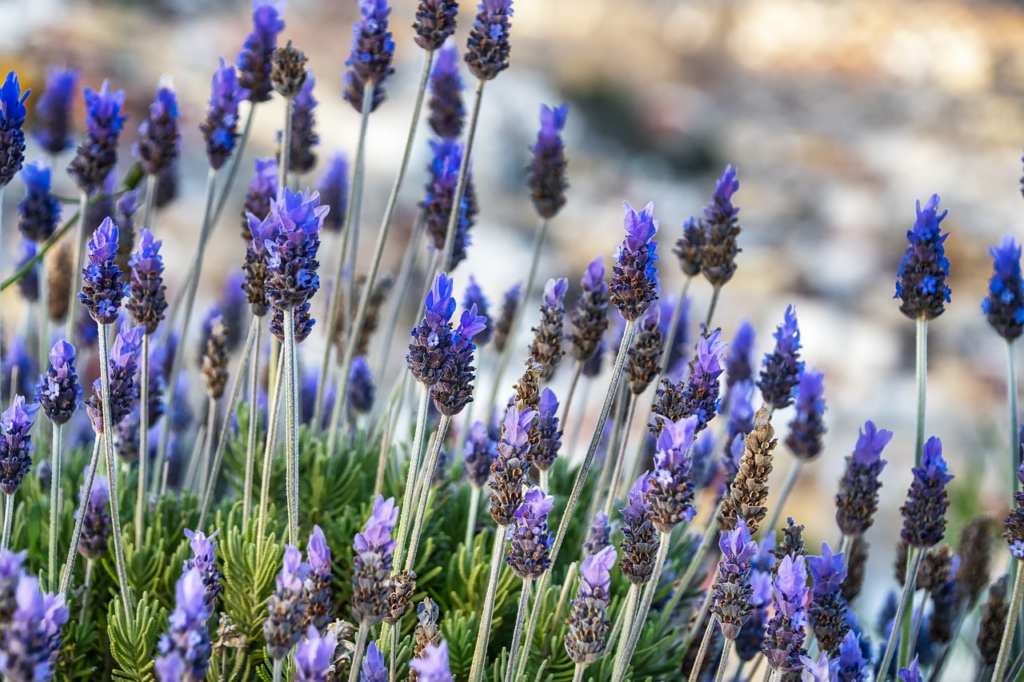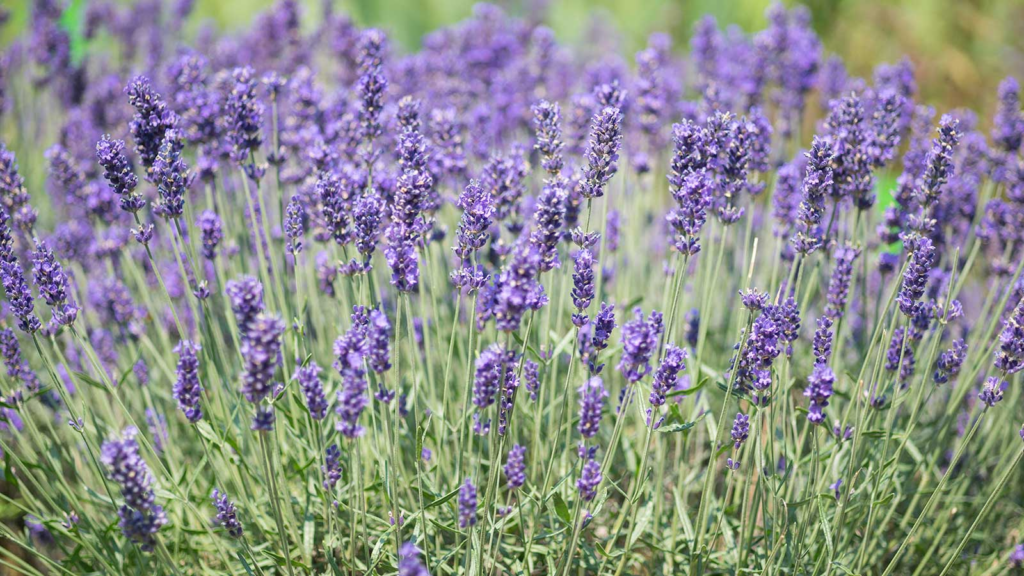How to Grow and Care Fern Leaf Lavender? – Hardiness of Fern leaf – Is it edible or not?
One day, I noticed that the stem of my Fern leaf Lavender was turning brown. Was I over-watering the lavender? Not really; the main reason was that I used to water it even when it rains. Are you making such a silly mistake and causing the plant to die? I guess it’s time to stop.
Why am I saying this? To help you, plant lovers in growing Fern leaf Lavender, here I have shared everything about the plant, including growing and caring tips that will make it successful in thriving in your garden.
What are you waiting for? Let’s start learning and give the plant a beautiful life.
Key takeaways:
- Lavender has feathery silver-green foliage that is fragrant and sprawling. Their leaves are ideal for bringing texture to mixed perennial beds and herb gardens.
- Lavandula multifida, also known as fern leaf lavender, is a highly aromatic, fast-growing, everblooming plant with straight stems clad in dissected fern-like gray-green leaves that grow to 24″ tall.
- It is native to the Canary Islands and the warm climates of the northwestern Mediterranean.
- It appears to be a perennial but is a sub-shrub because it develops woody stems over time in areas where it is winter hardy.
- Deeply lobed, lacy, silver-green leaves (to 1.5″ long) are usually divided into narrow segments twice pinnately. Blue-violet flowers bloom just like weeping trees in dense showy terminal spikes, tall stems rising above the foliage.
- Flowers bloom all year in warm winter locations. When plants are grown as annuals, they bloom primarily in the summer.
- This plant attracts butterflies and bees but also keeps them away from some plants as they harm them.
About Fernleaf Lavender Plants
Fernleaf lavender also known as Lavendula Multifida is one of the plants that produces fern-shaped leaves in the plant that looks attractive. It produces grayish shade and green-colored leaves in the plants.
They can be added to your herb garden and trust me, they will amaze you with their benefits. So, what are you waiting for? Grow the amazing fern leaf lavender plants in your home garden.
You can easily harvest its leaves and flowers as well. After harvesting, you can use them in cooking or in making other care products. You should not use this variety only for herbal use. Being a woody shrub, you can grow them near the borders.
It will grow about 2 feet long and 2 feet wide. If you provide it will good climatic conditions especially warm, then they will cherish you with its amazing flowers all the year.

How to Grow and Care for Fern leaf lavender?
Below are the points that will let you know about how to grow and care for fern leaf lavender. They are as follows:
Watering
- It will grow best if you provide it with water 2 times a week when the plant is in its developing stage.
- Also, when it grows fully you have to decrease the frequency of watering the plant to one time after every 2 to 3 weeks.
- When you observe that the plant has begun to flower, then you have to feed them with more water like 2 times a week, which will help in encouraging more blooms in the plant.
- Keep in mind that you have to let the plants well drain. It will not grow in the damp soil.
Fertilizer
- However, this variety of lavender does not require fertilizers for its growth as it can even grow in poor soil.
- When the plant receives nutrients in excess quantity, then it ruins the growth of the plant.
- You can make use of nitrogen-based fertilizers which will help stimulate the growth of the leaves in the plant.
- So, last but not least, you can also make use of compost which will provide nutrients to the plant.
- Provide the plant with fertilizer for about 1 time in a few years, it will help in growing more and more blooms.
Sunlight
- They require a good amount of full sunlight for its well growth.
- As you know they are native to the Mediterranean and parts of Asia and Africa, so they prefer full sunlight.
- So, choose a sunny location in your garden area. And place your plant there.

Pruning
- Pruning is needed by every plant to grow well and attain its shape and size. The same is the scenario with the fern leaf lavender plant.
- They require less pruning as compared to other plants, you have to prune at the time of spring season.
- It will promote new growth in the plant and more and more blooms.
- You have to remove all the dead and decayed leaves from the plant as it will harm the growth of the whole plant too if not removed on time.
- Also, you have to make use of sharp and sterilized scissors for doing so. It will not let the diseases spread in the garden area.
Temperature
- It will grow in the warm climatic conditions. So, you have to provide them with a sunny location in your garden area.
- As you know it is a resistant plant and is not demanding when it comes to watering them.
- So, the average room temperature is well for the growth of the plant. To encourage blooms in the plant, you have to feed them with the right temperature conditions.
Soil
- Fernleaf lavender plants will grow best in medium to rich soil. You can make use of essential oils by mixing them in the soil for the well-being of the plant.
- The ideal pH level of this plant is 6.7-7.3 which is slightly neutral to alkaline.
- Also, it will grow best in well-drained soil and lean soil.
Caring tips for Fernleaf Lavender
- Climate considerations are the first step in proper Fern leaf lavender care. Lavender is native to the hot, dry Mediterranean, and it grows best in zones 8 through 10.
- It prefers the sun and dry conditions, but this variety can withstand more moisture than others.
- This plant will not survive in winter temperatures of 20 degrees Fahrenheit (-7 degrees Celsius).
- If you live somewhere colder, you can still grow it as an annual or in a container that you bring indoors for the winter.
- Assure that the soil has good drainage and some organic matter. Only water the lavender when there is a drought or when it is establishing itself.
- Remove spent flowers to promote more blooming, and prune the shrubs in the spring.
Problems with fern leaf lavender
- Leaf spots and root rot are potential problems.
- Plants may not survive the winter if soils are not well-drained and temperatures fall below 20°F without the protection of snow cover.
Uses of Fern leaf lavender
- Adding leaves to food dishes as a flavoring
- Oil from stems and leaves has antiseptic properties (externally)
- Applications to wounds, bruises, and insect bite
- Adding dried flowers to clothing drawers as insect repellants, and (4) potpourris.
- They attract pollinators and most importantly don’t repel bees
Harvesting of Fern leaf lavender
Both the fragrant leaves and flowers can be harvested and used. Clip the stems low on the shrub for leaves and blooms at any time of year. The leaves have a piney aroma and fragrance compared to other lavenders.
Lavender leaves and flowers can be used to make tea, which can then be used to make the popular drink Lavender Lemonade. Meat and fish dishes are also flavored with leaves and flowers.
Is lavender a Fern?
Fern lavender (Lavandula Multifida) is a variety that grows well in your area and is known for its foliage that resembles fern leaves.
It grows numerous spikes from its compact shape and thrives in a sunny location with protection from cold winds. Dried, aromatic lavender can be used for a variety of things.
How do I prune my Fern leaf lavender?
Make sure the soil is well-drained and contains some organic matter. Only water the lavender when there is a drought or when it is just getting started.
To encourage more blooming, remove the spent flowers and prune the shrubs in the spring, just as the new leaves begin to grow.

Is lavender poisonous?
When inhaled during aromatherapy or ingested in small amounts, lavender oil is usually not poisonous to adults.
Even if a small amount is swallowed, it can cause a reaction in children. The main side effects are caused by skin allergy symptoms.
Remove spent blooms to encourage the formation of new ones. However, towards the end of the flowering season, you can leave them in place as food for seed-eating birds such as goldfinches.
Does lavender stay green in winter?
Lavender is a Mediterranean perennial plant with a strong scent. Its grey-to-green foliage remains evergreen throughout the year in warmer climates.
It will thrive well if you keep the plant warm in winter as well, and the herb thrives in even the harshest of garden conditions.
Wrapping up the context
In this guide, you come to know that Lavender has feathery silver-green foliage that is fragrant and sprawling. Their leaves are ideal for bringing texture to mixed perennial beds and herb gardens. This plant attracts butterflies and bees.
In this article, you can learn everything about the Fern leaf Lavender, its growth and care tips, and also its credibility! Lavandula Multifida, also known as fern leaf lavender, is a highly aromatic, fast-growing, everblooming plant with straight stems clad in dissected fern-like gray-green leaves that grow to 24″ tall.
Thanks for reading! Happy Gardening!
FAQs
1. What happens if you don’t prune lavender?
Long-lasting lavender plants benefit from annual pruning. They develop a large, lanky, woody base that can split open without it, which is unsightly and shortens the plant’s lifespan.
2. Which lavender is hardy?
The English lavender species (Lavandula angustifolia) is the hardiest of all lavender species, surviving frosts, snow, wind, and deer and rabbit attacks. English lavenders can be grown in a temperate climate and are hardy to zone
3. How do you prevent lavender from going hardy or woody?
Lavender should be planted in well-drained, rocky soil on a slope (if possible) to ensure proper drainage. Fertilize them lightly the first year after they’ve been planted. After that, stop fertilizing regularly. Lightly prune lavender to keep its rounded shape.


